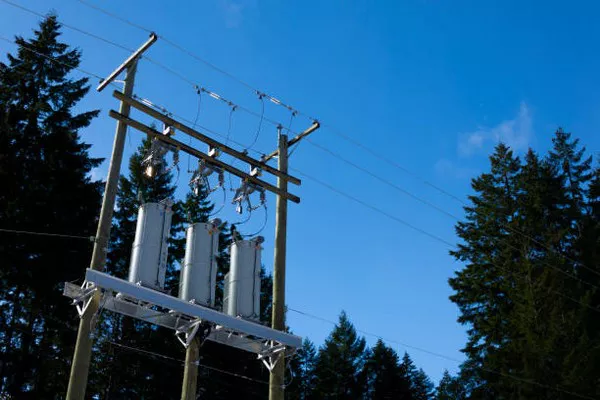In the tapestry of modern civilization, electricity weaves through almost every thread, powering homes, industries, and an increasingly digital world. Central to this intricate network of power distribution are electrical transformers, silent yet indispensable devices that ensure the seamless flow and efficient management of electrical energy. Understanding why we need electrical transformers involves exploring their fundamental functions, their impact on the efficiency and safety of power systems, and their pivotal role in enabling technological advancements.
The Fundamental Functions of Electrical Transformers
Electrical transformers are devices designed to transfer electrical energy between two or more circuits through electromagnetic induction. Their primary function is to change the voltage levels between circuits. This ability to step up (increase) or step down (decrease) voltage is crucial for several reasons:
Efficient Power Transmission:
Voltage Transformation: Power plants generate electricity at relatively low voltages. However, transmitting electricity over long distances at low voltages would result in significant energy losses due to the resistance of the transmission lines. By stepping up the voltage to high levels (often in the range of hundreds of kilovolts), transformers reduce the current in the transmission lines, thereby minimizing losses.
Reduced Transmission Losses: The power loss in a transmission line is proportional to the square of the current (P=I²R). By increasing the voltage and consequently reducing the current, transformers help in drastically cutting down these losses, ensuring that a greater portion of the generated power reaches its destination.
Voltage Regulation and Stability:
Load Matching: Different electrical devices and systems operate at different voltage levels. Transformers allow for the matching of supply voltage with the voltage requirements of various loads, ensuring that devices operate efficiently and safely.
Stabilization: Transformers also play a role in stabilizing the voltage levels across the power grid. They help in maintaining a consistent voltage level despite fluctuations in demand, thereby protecting sensitive electronic equipment from damage due to voltage spikes or drops.
The Impact on Efficiency and Safety
Transformers contribute significantly to the overall efficiency and safety of electrical power systems in several ways:
Energy Efficiency:
Reduction of Copper Losses: By enabling high-voltage transmission, transformers reduce the current in the transmission lines, which in turn reduces the I²R (copper) losses. This efficiency is critical in reducing the operational costs and environmental impact of power systems.
Enhanced System Performance: Efficient voltage transformation and regulation lead to improved performance of the entire power system. This ensures that electrical energy is not only transmitted but also utilized in the most efficient manner possible.
Safety Enhancements:
Isolation: Transformers provide electrical isolation between different parts of the power system. This isolation is vital for protecting both equipment and personnel from electrical hazards. For instance, a step-down transformer reduces the high transmission voltage to a safer level before it enters residential or commercial buildings.
Fault Management: In the event of faults or short circuits, transformers can help in localizing and managing the fault, preventing it from cascading through the entire power grid. This containment is crucial for maintaining the stability and safety of the power system.
Enabling Technological Advancements
Electrical transformers are not merely passive components in the power grid; they are enablers of technological progress and innovation:
Integration of Renewable Energy Sources:
Renewable Energy Compatibility: The rise of renewable energy sources such as solar and wind power has introduced variability and complexity into the power grid. Transformers facilitate the integration of these sources by matching their output voltages with the grid requirements. They ensure that renewable energy can be efficiently and safely injected into the grid.
Distributed Generation: With the advent of distributed generation systems, where power is generated closer to the point of consumption, transformers play a key role in ensuring the correct voltage levels and maintaining grid stability.
Smart Grids and Modern Infrastructure:
Smart Transformers: The development of smart grids, which use digital communication technology to detect and react to local changes in usage, heavily relies on advanced transformers. Smart transformers can adjust their operation dynamically, contributing to the grid’s responsiveness and efficiency.
Support for Electrification: As sectors such as transportation and heating become increasingly electrified, the demand for reliable and efficient power supply grows. Transformers support this transition by ensuring that electrical infrastructure can handle the increased load and diverse voltage requirements.
Challenges and Innovations
While transformers are foundational to power systems, they also face challenges that drive ongoing innovation:
Efficiency Improvements:
Material Advancements: Research is focused on developing better core materials, such as amorphous steel, which can reduce core losses and improve the efficiency of transformers.
Cooling Technologies: Enhanced cooling techniques, including the use of natural and forced air, oil, or even advanced liquid coolants, are being developed to manage the heat generated by transformers more effectively.
Environmental Considerations:
Sustainable Designs: Transformers are being designed with a focus on sustainability, using environmentally friendly materials and designs that reduce their carbon footprint.
Recycling and Disposal: Innovations in recycling and disposal methods for transformer components are crucial for minimizing environmental impact at the end of their lifecycle.
See Also WHAT IS SINGLE PHASE AND THREE PHASE TRANSFORMER
Conclusion
The importance of electrical transformers in modern power systems cannot be overstated. These devices are essential for efficient power transmission, voltage regulation, and ensuring the safety of the electrical grid. They enable the integration of renewable energy sources and support the development of smart grids and modern infrastructure. As technological advancements continue to unfold, the role of transformers will only become more critical, driving further innovations in efficiency, sustainability, and grid reliability. Understanding and appreciating the functions and impacts of transformers is fundamental to recognizing their value in our electrified world.

